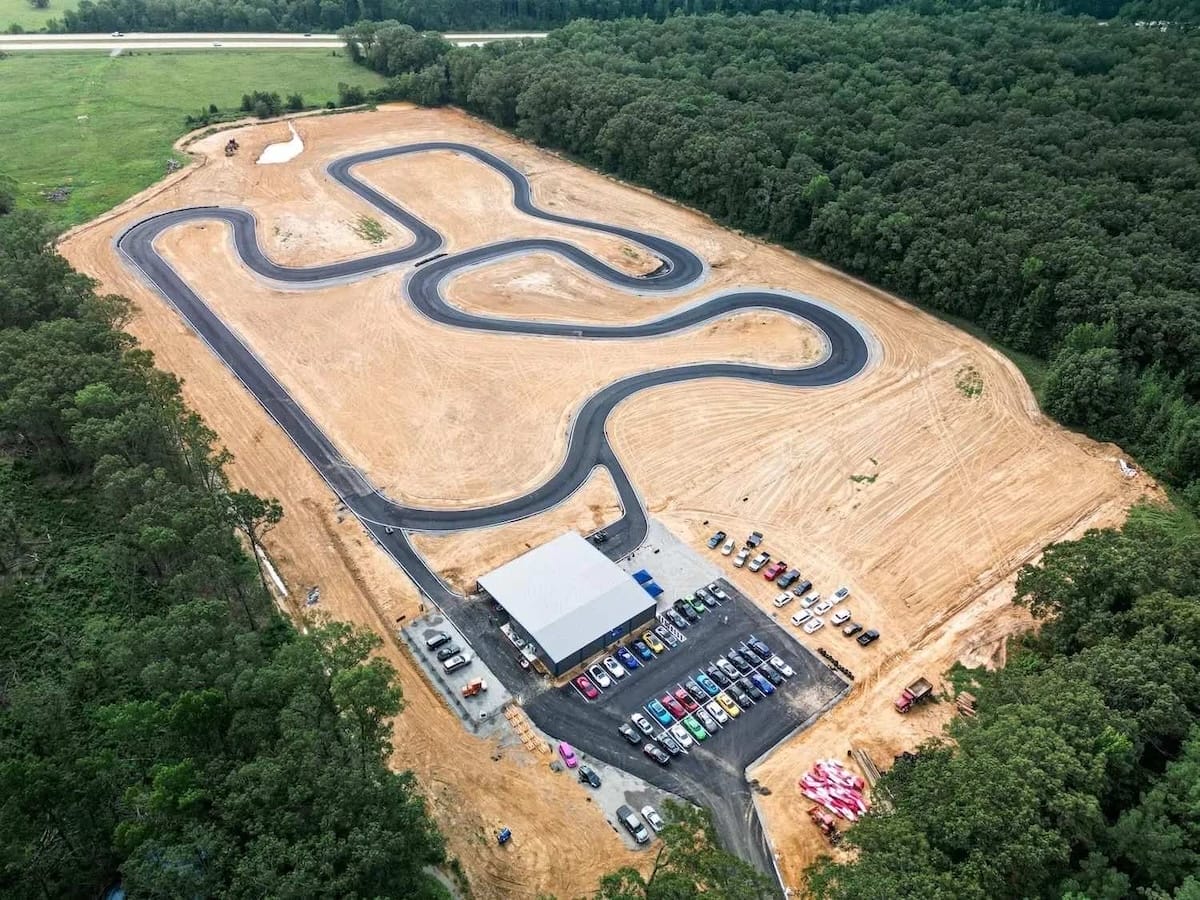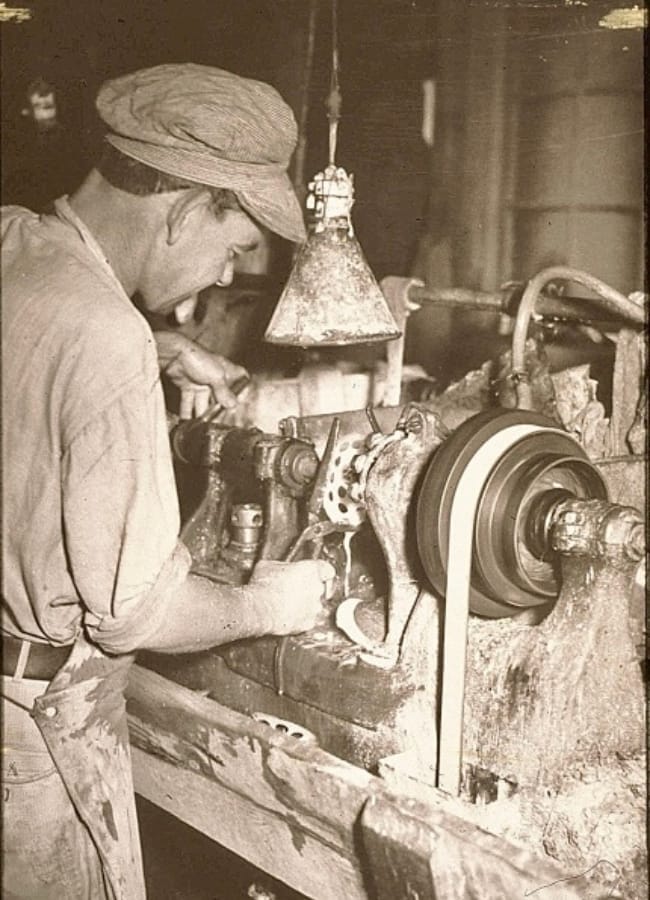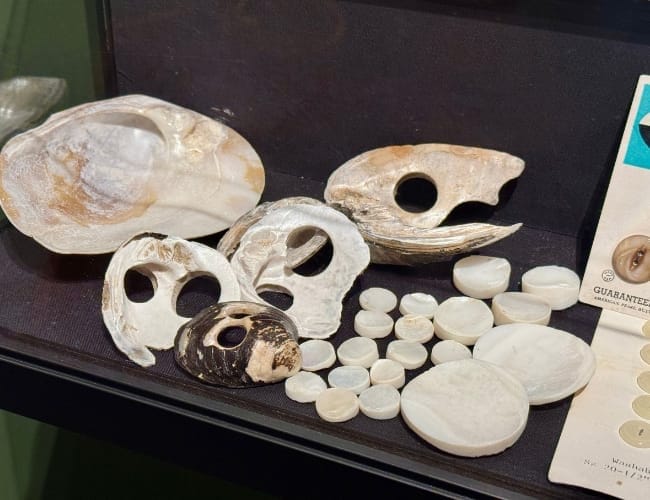

Uh oh...
It appears that you're using a severely outdated version of Safari on Windows. Many features won't work correctly, and functionality can't be guaranteed. Please try viewing this website in Edge, Mozilla, Chrome, or another modern browser. Sorry for any inconvenience this may have caused!
Read More about this safari issue.

As you shop for crisp shirts and uniforms to prepare the kids for back-to-school, you probably haven’t paid much attention to the buttons on their shirts. But would you believe those tiny fasteners once helped fuel an entire industry along Arkansas’s rivers? In the early 1900s, Arkansas was at the center of a pearl rush and by mid-century, we were producing buttons in large quantities.
It all started with mussels (mollusks) and a little sparkle.

The Great Arkansas Pearl Rush
At the turn of the 20th century, the quiet town of Black Rock, Arkansas, came alive with excitement. In 1900, a local man opened a freshwater mussel and found a shining, natural pearl inside. News spread quickly, and soon, hopeful treasure hunters lined the banks of the Black River, eager to see their fortune in a shell. This brief craze, known as the Arkansas Pearl Rush, drew nationwide attention to the state’s freshwater streams.
But the rush didn’t last long. By 1905, the excitement over pearls was fading. Still, shelling went on. People began to notice something else inside those discarded mussel shells—an iridescent lining called mother-of-pearl. And with that discovery came a new kind of gold mine: buttons.
There was a growing industry in Muscatine, Iowa, where haberdashers used mussel shells to make buttons. So, Dr. James H. Myers of Black Rock started collecting discarded shells to send north. However, sending them away seemed pointless when the Arkansas Delta waters were teeming with various mussel species. Button factories in Arkansas were reported as early as 1896 and remained active through the early 1920s.

From Riverbeds to School Shirts
As the pearl rush faded, a second wave of the button industry took off. During the 1940s and 1950s, Arkansas became a center for harvesting mussel shells and shaping buttons from their shiny inner layers. Towns like Clarendon, Newport, Parkin, Corning, and De Valls Bluff weren’t just rural communities; they housed button factories that helped clothe a nation.
For many Arkansans, it was a hands-on industry. Locals had favorite foraging spots along the rivers, diving for mussels with homemade gear crafted from old gasoline cans, hot water heaters and tin buckets. What began as pearl hunting turned into an early version of “work from home.” People could stop by the factory on their way home from work to drop off their finds or even rent a button puncher to use at home, turning their catch into buttons in their backyard.
You could make hundreds of buttons from a single batch of mussel shells. It was simple, profitable and surprisingly beautiful work. And if you’ve ever run your fingers over a vintage coat or blouse and noticed the creamy shine of its buttons, chances are, it once floated down a river in Arkansas.

Button Streets and Shell Roads
The influence of the industry extended well beyond fashion. Clarendon and nearby towns literally paved their roads with discarded shells. After button blanks were punched out of the shells, the remaining scraps, small crescent-shaped pieces, were crushed and used as gravel for streets, driveways and alleys. Some roads in eastern Arkansas still glisten with bits of mother-of-pearl, reflecting the region’s hardworking history.
The button industry provided farming families with an extra income opportunity that easily fit around harvest times and the busy schedules of larger families. Men could bring in the harvest, while women and children could open and sort them to prepare for transport to the factory. Of course, the occasional “slug” pearl find was always an exciting little treasure hunt.

The End of an Era
As new materials like plastic surfaced, the button industry, like many others connected to handcrafted work and natural resources, started to decline. Mechanization sped up production but also made the charm of hand-punched shell buttons less practical. What once appeared to be a clever way to use nature’s leftovers became too expensive and slow to remain competitive.
Overharvesting came with a high cost. The population of American freshwater mussels has declined, and some species have become endangered. That decline still impacts areas like Clarendon today. As plans developed to replace the bridge, a large mussel bed, about the size of a dinner plate, had taken hold of the pile’s base and delayed the project. The Arkansas Game and Fish Commission, along with other ecological partners, led efforts to protect these species, which are vital to the river ecosystem, as they clean and reproduce within the waters. Even now, the mussels serve as a reminder of the region’s fragile ecological balance.
Today, Arkansas’s mussels are protected, and ongoing conservation efforts help preserve the remaining river ecosystems that once supported this busy button industry. Research institutions, museums, and state agencies continue to educate the public about the role of mussels in Arkansas’ history and why they remain important and require proper care.
Pictures in the story were taken at historical museums in the Arkansas Delta.
Join the Conversation
Leave a Comment
2 responses to “The Hidden Story of Arkansas’s Pearl Button Boom”
 Leave a Reply
Leave a Reply
We do the work.
You check your email.
Sign up for our weekly e-news.
Get stories sent straight to your inbox!












 Leave a Reply
Leave a Reply
Extremely interesting article. As a quilter and occasional seamstress I was fascinated by this story. I had no idea bottom making from mussels was ever a ‘thing’ in Arkansas.
I have all of my grandmothers old buttons and will go through them this afternoon to see if I can find an Arkansas treasure!
Wonderful, well written article. I am familiar with this Arkansas history but loved the author’s view and information